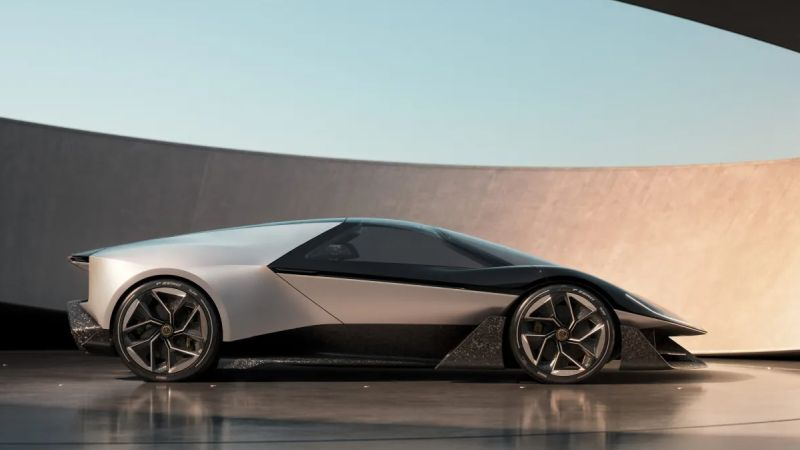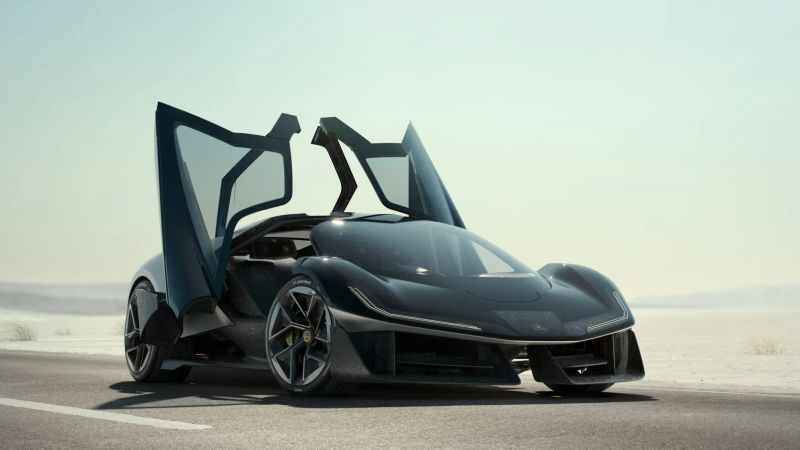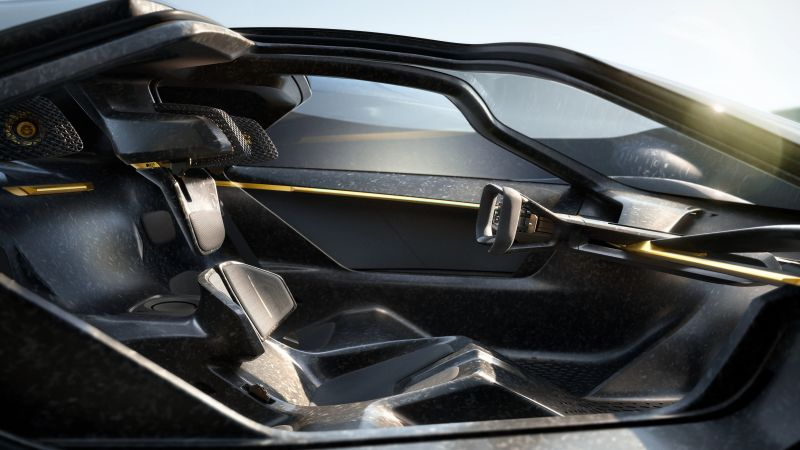The Lotus brand, owned by the Chinese concern Geely, tries not to forget about its glorious sports past, and therefore the Theory 1 concept demonstrated by it demonstrates a current approach to creating sports cars. First of all, the car is all-wheel drive and has a peak power of 1000 hp, but its curb weight does not exceed 1600 kg.

Image source: Lotus
This may not seem like a very convincing figure compared to small cars with internal combustion engines, but the other two electric cars in the current Lotus model line, Eletre and Emeya, pull almost 2.5 tons, which, combined with the hurricane dynamics of the electric power plant, places increased demands on the braking system . In essence, Lotus Theory 1 demonstrates an approach to increasing the energy efficiency of modern electric vehicles, since almost 1,000 hp are provided for 1,600 kg of curb weight. You just need to take into account that when calculating the curb weight, the body weight of three people is taken into account, since the car is capable of taking on board only so many riders.
The driver in this interior is located centrally in the first row, and the two rear passengers are slightly offset on either side of him in the second row. This, combined with an electric drive that gives some freedom of layout, allows you to comfortably accommodate three people inside the cabin with a wheelbase length of 2650 mm and a total body length of less than 4.5 meters. The record low weight for most electric vehicles of this power was achieved through the active use of carbon fiber, composite materials with the addition of cellulose and polycarbonate when creating body elements. Many materials are obtained after recycling, and only ten different materials were used in the interior design. All this was done to care for the environment.

The slim profile chairs are made using 3D printing and recycled materials. Doors with a large glass area are equipped with an unusual opening mechanism – they rise up and move back. According to Lotus, this allows you to get in and out of the car comfortably, even in parking spaces no wider than 2,400mm. If we take into account that 2000 mm of this value will account for the width of the electric car body, then the remaining 400 mm, when divided by two, gives only 20 cm of free space on the sides.

An advanced acoustic system can both imitate the roar of an engine when accelerating and suppress noise to create greater comfort. The aerodynamics of the body have also been worked out very carefully, both to increase downforce and reduce noise levels and increase energy efficiency. The capacity of the traction battery does not exceed 70 kWh, with it the vehicle is capable of covering 402 km in the conventional WLTP cycle. Not much by the standards of utilitarian vehicles, but Lotus Theory 1 is only a concept that does not guarantee the transfer of all technical characteristics to production products of this brand. The maximum speed reaches 320 km/h, and the sports car covers the first “hundred” in less than 2.5 seconds.
Four lidars, six cameras, and an impressive array of radars and sensors are responsible for active safety. A 360-degree view of 200 meters around the machine is provided even in limited visibility conditions. Formally, the Nvidia Drive platform provides level 4 autonomy, but the controls and interface of the sports car are made in such a way that the driver needs to be minimally distracted from the road. Since the steering wheel has no physical connection with the wheels, its position can be adjusted widely, as well as the position of the pedal assembly. Vibration signals from the desired side of the steering wheel can be used as hints. Projection screens are actively used, and laser sources produced by Kyocera are responsible for external lighting.
Many of the technical solutions used to create this concept will be used in production Lotus cars. Moreover, compared to the offers of other Chinese manufacturers, its current sports cars for $2.3 million seem excessively expensive, and therefore the range of models needs to be expanded towards lower prices.